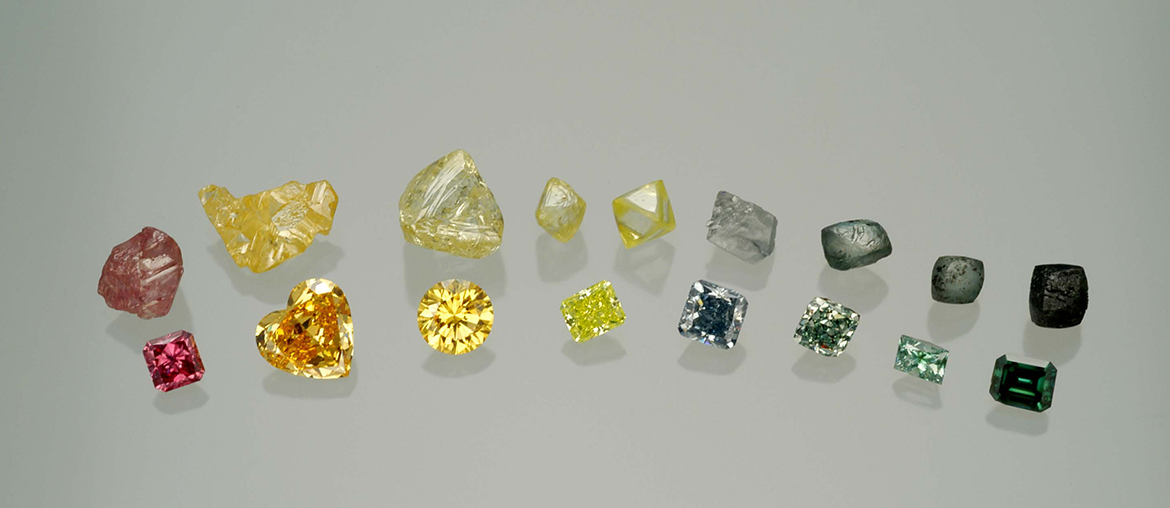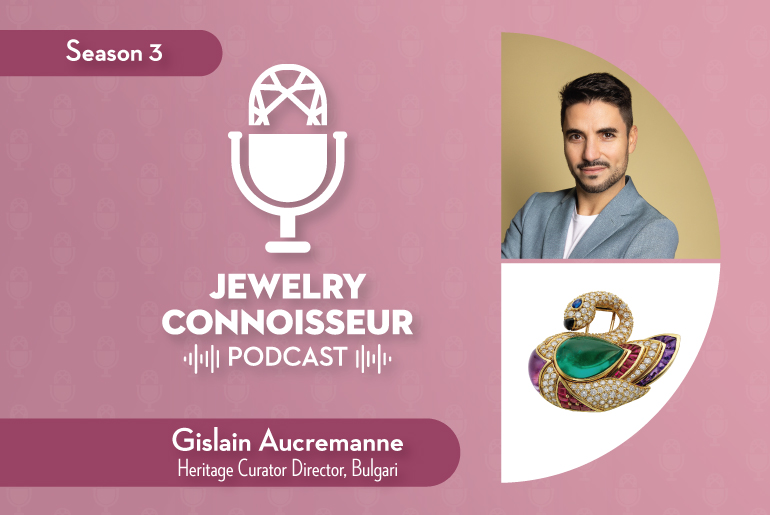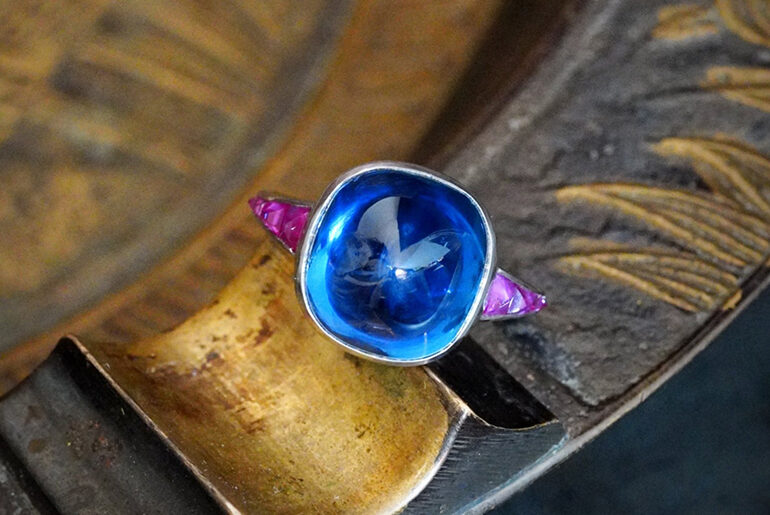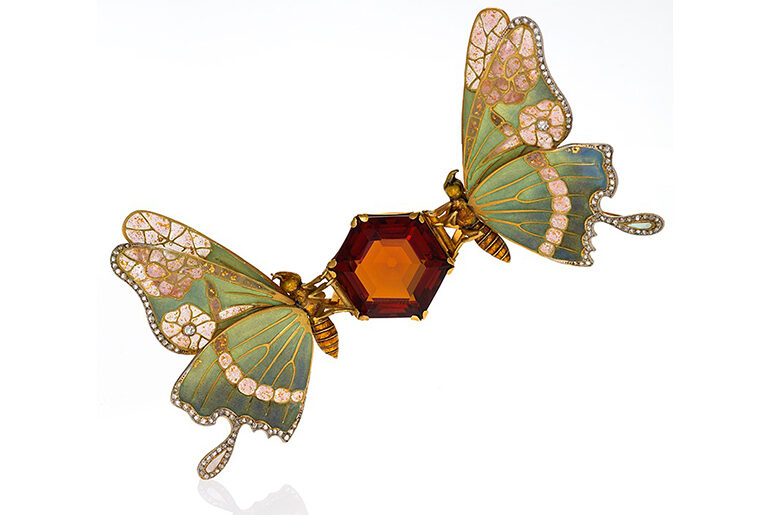When looking for your perfect colored diamond, price is secondary to how a stone makes you feel.
We live in a natural world that surrounds us with colors of all kinds, in objects from flowers to rocks. Colors affect our physiological, emotional and spiritual needs.
Most colors in nature we can only admire and contemplate from a distance, such as rainbows, or exotic fish or flowers. These things are ephemeral, usually serving as reference points for emotions in our subconscious. But nature has also created many beautiful hues in objects that last for millennia, such as gemstones. Like all things, these rocks contain a combination of elements or mutations that cause them to absorb spectral white light (sunshine) and reflect the unabsorbed colors back to the human eye.
A case for beauty
There are hundreds of types of stones that play with light and present remarkable colors, and in such cases, rarity often affects value. This value scale is useful for many so-called rarities, such as artworks, artifacts and other collectibles. But it tends to distract from the most significant aspect of purchasing anything valuable for fun.
When I look at a stone, the first thing I consider is, do I find it beautiful? Does it have desirable, unusual and stimulating good vibrations? If it doesn’t pass this initial unconscious reaction, I will continue hunting. This is a major point. If you are not in the business as a trader, your view of a stone’s potential should not be financially motivated. As a colored-diamond dealer and collector for 40 years, I have never bought a stone I did not love, just because the price was right. If I was selling, I only wanted to sell a beautiful object. If I was collecting, I was more amicable toward colors that complemented my goal of finding the variety of hues nature had produced.
Words of advice
I have learned many lessons in my four decades of experience. Here are a few of them.
- The first rule of thumb for consumers is: If it’s not beautiful to you, don’t waste your time. There are so many ways salesmen try to influence us when they see our lack of experience, and many times, we make decisions based on manipulation of the truth. Take some time to learn what you like. The truth about natural colored diamonds is that taste is subjective. Everybody likes different things.
- Your opinion of beauty is the only one that counts. There is no such thing as a universal statement that something is “the most beautiful.” Who makes that decision for you? Only you can. Be honest with yourself, and don’t let anyone convince you that they know you better than you know yourself.
- Beauty and price have nothing to do with each other. I’ve seen diamonds for $2,000 that I’ve found more desirable than a $2 million diamond. It’s not about the price, the size, or the rarity. It’s about how the color makes you feel. If it reminds you of a pleasant moment, your favorite flower, a personal experience of positive feelings, this a good direction for your thinking to take.
- Consider: Can I afford the first colors that appeal to me? The last thing you want or need to do is spend more money than you can afford on a little rock. If it happens to be a unique color you have not seen before, you can be sure that if you do your own due diligence, you will find something close to what you seek. Do not rush, as this joyful hunting often requires developing your perception, which takes time. Every color comes in multiple shades and tones and saturations. These stones may be in more subtle pastel hues or in different shapes or smaller sizes, which may be considerably more affordable and appealing.
- The term “the best” is used too often in our industry to try and influence purchases. The vast majority of the time, retailers who use such descriptions are basing them on a color grade from a laboratory certificate. But because lab grades are subjective and encompass a wide range of variables, “the best” is not a valid term. The best is subjective — in diamonds as in all things.
- Don’t be misled by over-the-top sales pitches. It’s a way to drive up the price. Deal with individuals or stores that do not create artificial expectations. As the saying goes, the devil is in the details.
- There is no such thing as a bargain. That is another red flag when purchasing a stone. If a colored diamond is truly beautiful, truly rare and truly valuable, the owner is not going to let a consumer buy it for less than he could get selling it within the trade. What you should be looking for is a dealer who will give you a fair market price and won’t take advantage of you.
- Buy only from a trusted resource with whom you have a long relationship, or who has a reputation you can research. While there are many honest and fair retailers and dealers in our industry, there are just as many con artists and sharks looking for suckers.
- On the whole, diamonds are not an investment. When someone talks investment, you should proceed with caution. In natural colored diamonds, only about 3% to 5% have the potential to be long-term investments. While the last decade has seen prices rise in all colors among dealers, consumers do not have the same options for liquidity or trading to make a business out of it. The large one-of-a-kind stones sometimes achieve multimillion-dollar prices, but despite the publicity of those sales, they don’t represent the reality for all colored diamonds. An analogy would be a painting selling for $450 million; it doesn’t raise the value of every painting in the world.
- Remember the purpose of your search. It is either to make you happy or to make someone dear to you happy. We have all had experiences that create positive or negative emotions unconsciously. These influence the way we buy cars, clothes and other things that are manmade for our pleasure. If a diamond doesn’t lift you emotionally, let it go.
Put happiness first
Natural fancy color diamonds are among the most beautiful creations of nature. They can be pastel or saturated, mixtures of multiple colors, small or large, with inclusions or without, and just about every shape imaginable. You may find your soul diamond for $1000 or $5 million.
If you decide to own one, it should be because it gives you positive thoughts and energy, makes you smile, connects you to a spiritual place, reminds you of a good experience you’ve had, or just makes you feel special. The goal is: Be happy. The best outcome you can hope for is that the stone you choose will be one you want to share with future generations of your family.
Alan Bronstein is president of the Natural Color Diamond Association (NCDIA).
Main image: Aurora Gems.





Comments are closed.